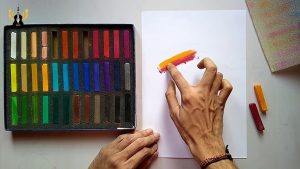Pastels are loved by artists because of the brilliance of their colors and their flexibility. pastel painting online course are available in a number of types; each has different characteristics, some of which make them better suited to certain styles and techniques. Knowing this will let you pick up the right pastel which would best meet your purpose.

Soft Pastels
The soft pastels are mostly used and rather popular and treasured for the deep colors and smooth, buttery application. In application, they have a buttery consistency and are easily blended or layered, creating soft, even graduations of tone and vibrant colors. It is a perfect pastel for anyone who creates a lot of expressive works needing large areas of color and values. Since the pastel sticks are fragile and easily smudged, handling should be done very carefully and lightly. Spraying of fixative helps in protecting the finished work.
Hard Pastels
Hard pastels, as the name would suggest, are harder; this is due to the higher binder-to-pigment ratio in their making. Thus, they are less colorful compared to soft pastels but ideal for line work, details, and initial sketches. They are a popular favorite for underdrawings or adding intricate elements to the piece of art using pastel. Moreover, they are very durable and therefore easier to transport or even to use out in the field. Hard pastel works well on smooth or moderately textured surfaces and can be combined with soft pastels for more refinement.
Oil Pastels
Oil pastels are really quite different from their soft and hard relatives. They are made with an oil-based binder, lending them a creamy consistency and far more permanent finish. Because of this, there is no need to use fixatives, as its surface is less likely to smudge. They are perfect for bold, impasto-style work; overlayering techniques give depth and texture to the artwork. However, they are unsuitable to make fine details since they will smudge whenever too heavily manipulated.

